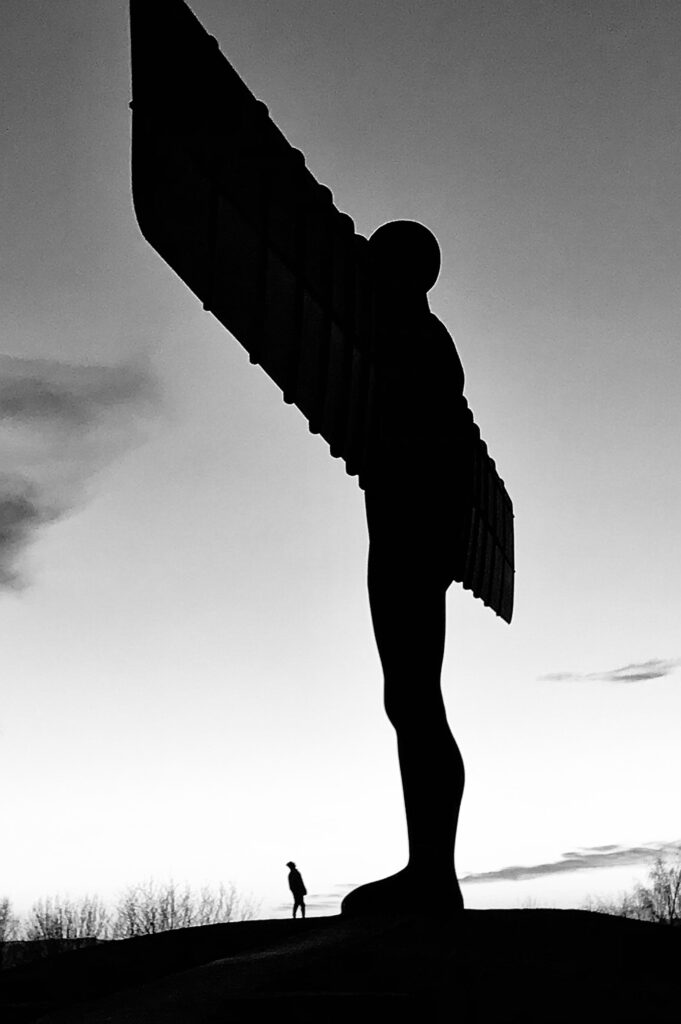
I met Catherine Murray at The Angel on a wet and muddy November morning to record a segment for Radio 4’s Sunday programme. We walked from the base of The Angel down the hill to the memorial, and through the trees. As we stood at the feet of The Angel, sun broke through the clouds and visitors posed for photographs on the slope below us, arms outstretched.
Walking with Catherine, I was aware once again of the importance of sound on the site. The traffic noise was constant, and I registered how much it encapsulates the atmosphere of this place, representing more than ambient noise. I noted in my last post that the movement of the traffic counterpoints and calls attention to the stillness of The Angel standing in its midst. Due to the surrounding roads, this contrast of movement and stillness is present if you are approaching The Angel from the carpark, standing beneath its wings, or walking through the memorial site in the trees. Catherine recorded her feet plodging through the mud beneath the trees to capture the acoustic resonance of our walk, a record of our movement which struck me as a further point of contrast with the recordings that David and I have been making of the static form of The Angel.
I was delighted to hear the recording aired on today’s New Year’s Eve programme. It was paired with author Peter Stanford speaking about what angels mean today and observing that, even as organised religion is in decline, angels offer a framework through which we can imagine continuing our conversation with the dead. Angels, like Gormley’s sculpture, offer a contact with spirituality without the need for affiliation to a specific faith or religion.
The Angel of the North appears in the dictionary of angels in Stanford’s Angels: A History, listed under ‘G’ for ‘Gormley’. Stanford highlights the importance of angels ‘in troubling, even hopeless, times’ (p. 74). Gormley has likewise indicated that his angel figure was intended as a guardian for the north-east of England at a time of ‘painful transition’, as traditional heavy industries gave way to the information age. On his website, Gormley speaks of The Angel as a ‘focus of hope’, and as a memorial that ‘bears witness to the hundreds and thousands of colliery workers who had spent the last three hundred years mining coal beneath the surface’. Although the specific historical resonance of the site may not be as present for visitors now as when the work was first installed, the sculpture still represents a place of hope, to which people turn at times of grief and personal crisis.
Many thanks to Catherine for editing our conversation so beautifully for the programme. Our conversation begins at 18:11, at this link.
References
Antony Gormley, ‘Making the Angel of the North’, https://www.antonygormley.com/works/making/angel-of-the-north
Peter Stanford, Angels: A History (London: Hodder and Stoughton, 2019).
